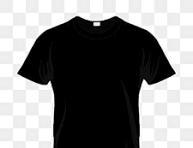In today's fast-paced fashion world, there's immense pressure on designers to create viral, attention-grabbing content. While pushing creative boundaries is often a good thing, there is a clear line that, when crossed, can lead to severe consequences for both the brand and the designer. The trend of creating and selling what are considered the most offensive shirts is a high-risk gamble with a significant downside.
This guide explores the commercial and ethical risks of this approach, offering a professional perspective on why it’s a path best avoided.
The High Price of Low-Effort Provocation
A single controversial design can have a domino effect on a brand's reputation and bottom line.
-
Brand Erosion: Years of building a trustworthy and positive brand image can be undone by one poorly conceived shirt. A misstep can permanently associate a brand with insensitivity or hate, a reputation that is nearly impossible to shake.
-
Financial Fallout: The financial risk is immediate and often severe. A viral backlash can lead to customer boycotts, the loss of retail partners, and the removal of products from major e-commerce platforms. The initial sales from a controversial design rarely outweigh the long-term loss of customer loyalty and trust.
The Designer's Responsibility
A designer is not just an artist; they are also a communicator. Their work has a real-world impact, and with that comes a responsibility to consider the message they are putting out into the world.
-
Know Your Audience (and Your Impact): Before a design goes to print, a designer must consider its impact beyond its immediate appeal. What seems like a harmless joke to one group of people can be a source of pain or a symbol of historical trauma for another.
-
Research and Context: A well-intentioned but ignorant design can be just as damaging as a malicious one. It is a designer’s responsibility to understand the historical and social context of any symbols, words, or imagery they use, particularly those from different cultures or communities.
A Checklist for Ethical Design
Navigating away from the category of most offensive shirts is not just an ethical choice; it's a smart business decision. Before a design is approved, consider this simple checklist:
-
Ask for a second opinion. Get feedback from a diverse group of people who are not on your immediate team.
-
Do your research. Use search engines and databases to check the history and social context of any symbols or phrases in your design.
-
Ask a key question. Does this design in any way punch down at a marginalized group? If the answer is yes, or even maybe, it's not worth the risk.
The most successful and enduring brands are built on trust, creativity, and a positive message. Avoiding the allure of creating most offensive shirts is a testament to a brand's commitment to these values and a sound strategy for long-term success.



